Space Mode
In space mode you can explore various structures in the universe ranging from
the topography of the Earth to the large-scale structure of the Universe.
Mitaka seamlessly integrates up-to-date observational data and theoretical models.
Earth
You can see Earth's atmosphere and the reflection of sunlight off the oceans.
You can also see city lights on the night side of Earth.
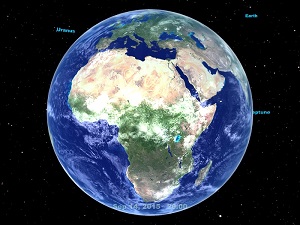 |
 |
| Earth's day side (Click image to enlarge.) |
Earth's night side lit up by city lights |
Planets and Moons
All known planets and major satellites are in Mitaka's database.
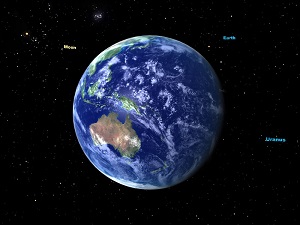 |
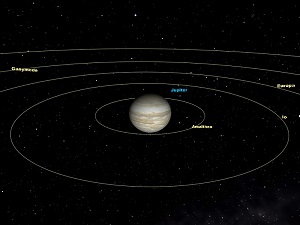 |
 |
| The Earth and the Moon |
Jupiter and its satellites |
Saturn and its satellites |
 |
| Pluto and its satellite, Charon |
Shadows of planets, moons, and planetary rings
You can see the shadow of the Moon on Earth and vice versa
and the shadows of the Galilean satellites (Io, Europa, Ganymede, and Callisto) on Jupiter.
You can also see the shadows cast by Saturn on the rings as well as the shadow of the rings on Saturn.
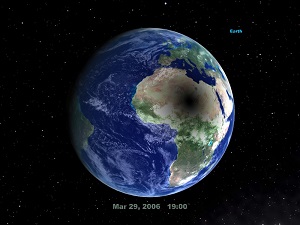 |
 | 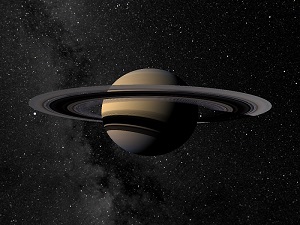 |
| The shadow of the Moon on the Earth during a solar eclipse |
One of the Galilean satellites cast a shadow onto Jupiter |
Shadows of Saturn's ring |
Topography of Planets and Satellites
On the Earth, the Moon and Mars, you can see the topography with some features labeled.
The height of topographic features can be exaggerated from the menu bar.
The Earth
 |
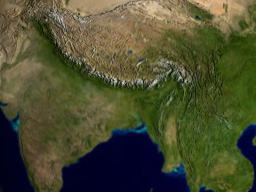 |
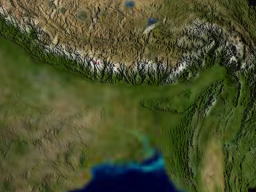 |
| Zooming in on Mt. Everest |
|
The topography is amplified by a factor of 5 |
 |
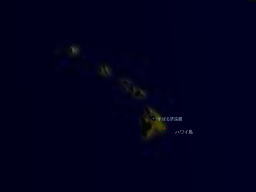 |
|
| The vicinity of Japan |
Hawaii Island and Subaru telescope |
|
The Moon
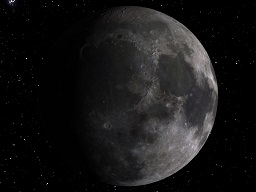 |
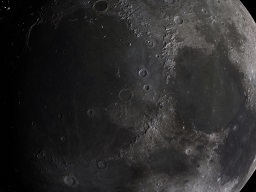 |
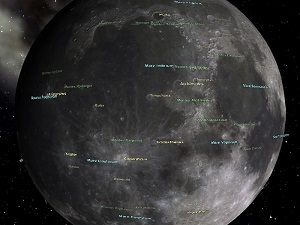 |
| Zooming in on Mare Imbrium |
|
Turning on place names |
Mars
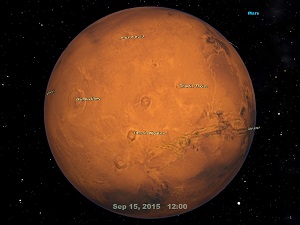 |
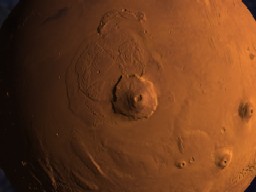 |
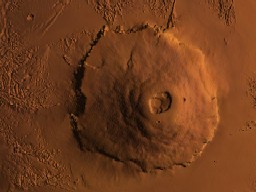 |
| Zooming in on Olympus Mons. |
|
The topography is amplified by a factor of 5 |
 |
 |
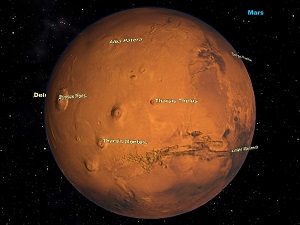 |
| Valles Marineris |
Topography around the Mars Pathfinder |
Famous features of Mars |
If you come close enough to the surface,
the mode will switch to "the surface exploration mode" and you can fly around while looking at the terrains.
The surface exploration mode
 |
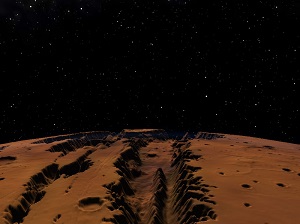 |
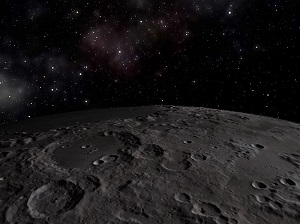 |
Olympus Mons. on Mars
(The topography is amplified by a factor of 5) |
Valles Marineris on Mars
(The topography is amplified by a factor of 5) |
Near Mare Crisium on the Moon |
You can see Itokawa's 3D model.
Itokawa
 |
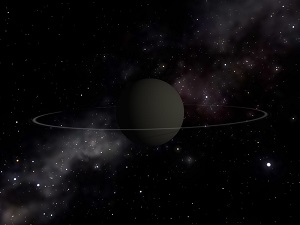 |
| Itokawa's 3D model |
Minor planet Chariklo with ring |
Spacecraft
Several spacecraft and their trajectories are in the Mitaka database.
 |
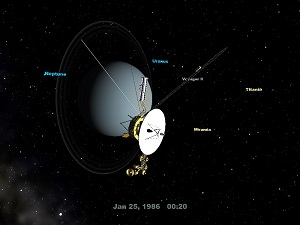 |
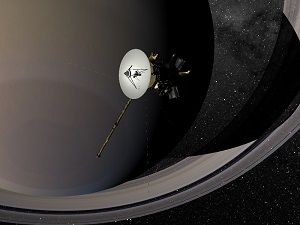 |
| Pioneer 10 |
Voyager II |
Cassini |
 |
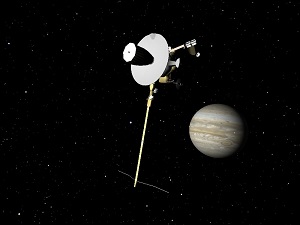 |
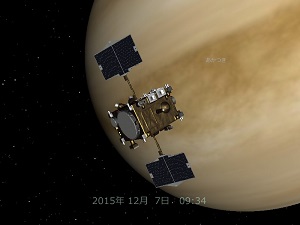 |
| New Horizons |
Galileo |
Akatsuki |
 |
| Hayabusa 2 |
Nearby Stars
Stars within 3000 light-years with distance measurements from the Hipparcos satellite are in the database.
 |
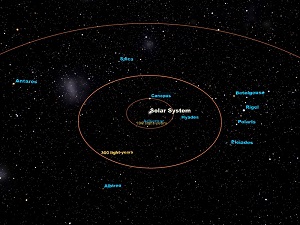 |
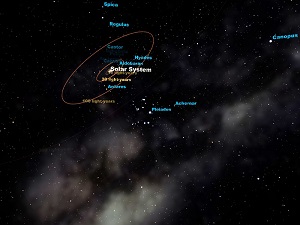 |
| Nearby stars |
|
The Pleiades star cluster |
Our Galaxy and Globular Clusters
Mitaka's visualizations of the distribution of stars in our Galaxy
and in globular clusters are based on theoretical models.
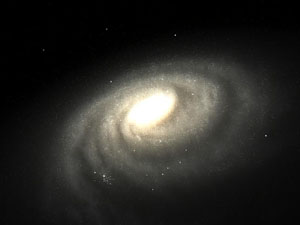 |
 |
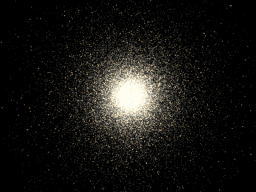 |
| Our Galaxy model |
Edge on view of our Galaxy model |
Globular cluster model generated using the "King model" |
Giant black hole, gravitational lensing, and the movement of stellar systems
It is believed that there is a giant black hole, called Sagittarius A*, in the center of our Galaxy.
You will be able to see stellar systems orbiting around it.
You will also see a gravitational lens effect caused by distortions in the space-time around the black hole.
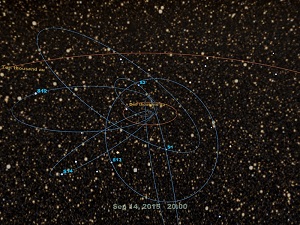 |
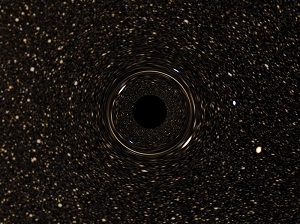 |
| The stellar system around the giant black hole (Sgr A*) at the center of our Galaxy |
A simulation of gravitational lens effect around the black hole |
The Distribution of Galaxies / Large-Scale Structure of the Universe
The distribution of galaxies within 100 million light-years is from the Nearby Galaxies Catalogue
by Brent Tully. The distribution of distant galaxies is from the Sloan Digital Sky Survey (SDSS) Data Release 7.
The shell map of the Cosmic Microwave Background is from the observation by the Planck satellite.
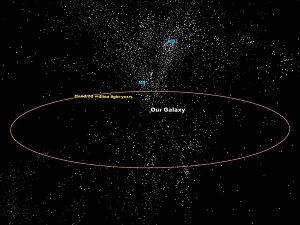 |
 |
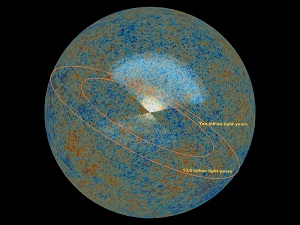 |
| The distribution of nearby galaxies |
The large-scale structure of the Universe |
The distribution of quasars and the map of the Cosmic Microwave Background |
|
